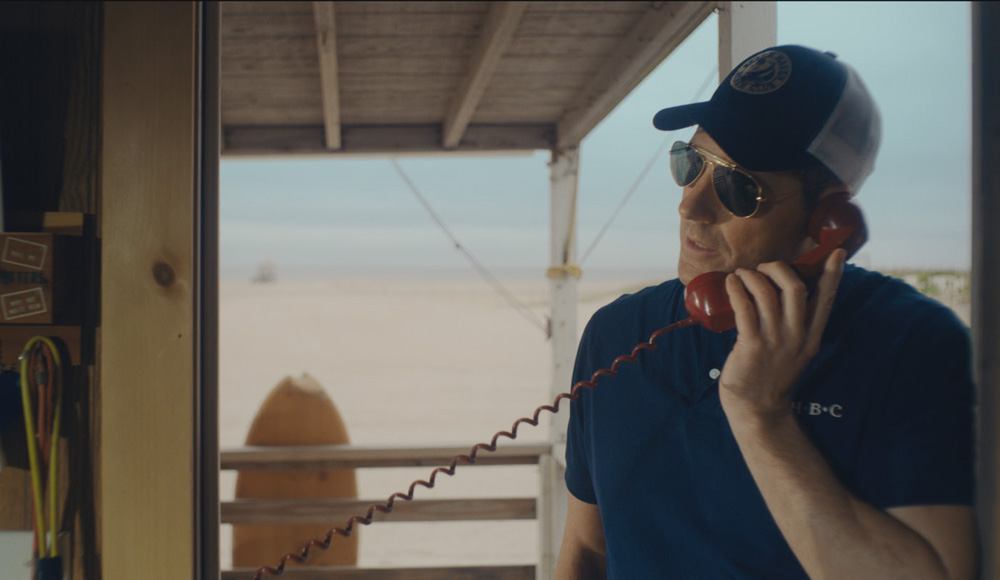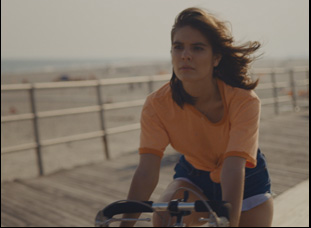Edward Burns had never really thought about it until his kids were starting to become the age when they might be curious about what their father did for a living that if it was up to the ratings board, it would still be a little while until he’d be able to show them one of his films.
“I wanted to make a PG-13 film that puts a smile on your face because all of my films have been rated R and I wanted to make a movie that they could watch,” says Burns, who has to be one of the unlikeliest directors to hold that distinction over a long career that hasn’t involved violent films or raunchy comedies. “And my son just discovered the Beatles and all of those early albums with songs like ‘Eight Days a Week’ and ‘I Wanna Hold Your Hand.’ So I thought, “Alright, I want a movie that’ll just improve your mood. It’ll make you feel the way those early Beatles songs make you feel.”
With “Summer Days, Summer Nights,” you can’t help but crack a smile as Burns provides audiences with literally a day at the beach, or rather six during a season of change for a group of twentysomethings on the cusp of starting their lives outside their parents’ purview. Although the film is infused with his own fond memories of being a teen in Rockaway Beach during the ‘80s, Burns presides over an ensemble dealing with all kinds of anxieties as the call of college, or at least, a change of scenery looms large for all, creating uncertainty for a number of relationships that may not endure for those who have never had anything so definitive end before. Not taking this particularly well is J.J. (Pico Alexander), who is put on notice by his girlfriend that they should start to think about what things will look like in the fall, while Winky (Rita Volk), his co-worker at Beach Haven Beach Club, is in a limbo of her own, upset that her well-to-do boyfriend appears to be stringing her along until the summer ends after departing early. They each have more decisive compatriots in Terry (Amadeus Serafini), J.J.’s cousin who is content to have a short-term fling with his sights set on tempting Winky away from her absent beau, Suzy (Caitlin Stasey), who is back in town after some time away in a bad marriage, finding comfort in the arms of her former flame Frankie (Anthony Ramos), who has settled into the life of a beach bum, and Frankie’s sister Debbie (Lindsey Morgan), who takes more initiative in both her professional life, with plans to move to New York, and her personal life as she grows closer to J.J.
While Burns has made a breezy romantic comedy, one can’t help but take notice of a craftsmanship that’s been built up over 25 years of making movies, brilliantly splitting up the narrative over three pivotal weekends — Memorial Day, the 4th of July and Labor Day — that will bring anyone back to the summer they turned 18, no matter where they were, and accentuating the snappy banter that’s long been a hallmark of his work with equally agile camerawork that pulls one right onto the coastline. A place that you won’t want to leave, it clearly was somewhere Burns didn’t either, recently setting his charming recent series “Bridge and Tunnel” for EPIX in the same milieu with some of the same cast, and recently the writer/director spoke about how the TV show ended up getting “Summer Days, Summer Nights” out of distribution purgatory after its premiere at Tribeca in 2018, having the ability to vividly recreate his past down to the last detail and continuing his impressive track record of discovering new talent.
It came from a couple different places, but long on my list of filmmaking goals was to do my version of an “American Graffiti,” a period ensemble about a bunch of kids at a major threshold moment in their life before they enter the real world. I knew I wanted the characters to be all at a different stage at their life unlike in “American Graffiti,” [where] I think they all had just graduated high school, so I decided to set it in ’82 because I’m about 12 or 13 and pre-MTV early ‘80s is the period I’m most nostalgic about, probably because as a kid in my neighborhood, seeing those older guys and girls were the kids we idolized and I was just fascinated and curious as to what their lives were, so this was a way for me to explore that. Aso the music, the cars, the fashion, the hair – I loved all that more so than the look that would’ve been my era of ’86-’87.
This would seem to have a connection to “Bridge and Tunnel,” your recent series for EPIX. Are the two connected?
If you were there at Tribeca, that cut of the movie was almost 25 minutes longer than this finished film and it’s been a long journey bringing this movie to its launch, but how they’re connected is we make [“Summer Days Summer Nights” then known as] “Summertime,” and we go to Tribeca and we get a couple of nibbles, but not great and I’ve been selling indie movies for a long time now and there are deals that are fair and there are deals that are very unfair for the filmmakers and producers, so we decided why don’t we just go back into the editing room, get this thing down to two hours and we’ll take it out into the marketplace.
Then I had a meeting with Michael Wright, who runs the Epix network, and he said, “We’re trying to do some half-hour comedies” because prior to that, they’d only been doing hour-long dramas and he’s like, “What do you think about doing a half-hour ensemble like ‘Diner’ but they could end every night at a bar instead of a diner. And we set it in the ‘80s.” And I said, “I love that idea, but what about we make it instead of six guys, we make it about six girls, six guys and I could set it on Long Island,” and he says, “Great.” He has not seen “Summer Days” at that point, but after I write the script for “Bridge and Tunnel,” we’re going through the casting process and he says, “I love the part of Jill, she’s so strong. Who are you thinking about for her?” And I said, “Well, do me a favor. Look at this movie I made a couple years ago that we’ve put on the shelf temporarily…” He sees Caitlin Stasey and says, “Oh my God, we’ve got to cast her as the lead of the show Michelle,” [and Epix became involved in the distribution of the film].
So “Bridge and Tunnel” comes out obviously first, and they weren’t really connected from a writing standpoint — in “Summer Days,” I was going for the most overly romanticized view of the summer I wish we all had, and “Bridge and Tunnel” is really about dreamers and working class kids who are taking that big step into the real world — even though now when you see the two of them, they are obviously linked because of that cast and the experience of working on “Summer Days” absolutely influenced the look and the tone of “Bridge and Tunnel.”
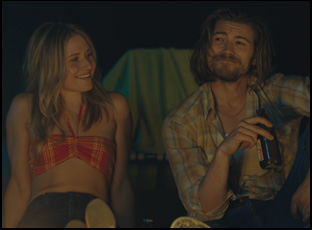
It’s funny when I was initially outlining the screenplay, I made a list of the things that I remember from my summers that I knew I wanted to include in the movie, starting with an old school block party. I grew up fishing and we would jump off our boat and swim to those bay houses that J.J. does the swim to. I remember friends of mine who played guitar and sitting on their front porches at night, playing guitars and drinking beer. Bonfires on the beach. I just listed all of those things that I remembered as those great moments from those summers of my youth, so then to show up on set on the day we were going to shoot the block party, for me it was really like walking back in time, walking out of the house on that night when everybody’s out there with their Roman candles and firecrackers and grilling on the street and the teenagers sitting on the hoods of the cars, making out and drinking beer. It really was a wild step back into a time machine.
I loved the visual energy of that scene in the film as you dart from one conversation to another – was working with steadicam exciting for you?
I made a TV show probably five years ago called “Public Morals” and that’s really the first time that I played with a lot of steadicam and I fell in love with with what I could do with it…
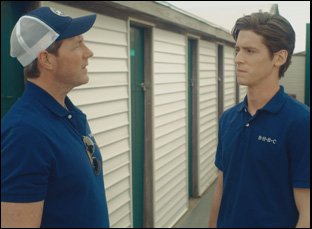
Again, it went back to “Public Morals” where part of it was I had so much dialogue to jam into those 43 minute episodes that I was always encouraging my actors to speak more quickly and not be afraid of overlapping. I fell in love with that kind of cadence and in making this film, I knew I wanted to employ that again. You never know with the group of actors that you get who is going to be able to really nail that, but plenty of actors can do it and I find because I typically write for New Yorkers, but Anthony Ramos and Jon Rudnitsky – Anthony is from Queens or Brooklyn and Jon, I think is from New Jersey, so they have that cadence in their blood, and that was fun to watch them just roll with it. Then Pico Alexander is also from Brooklyn, and the moment I first auditioned him, I knew, “Okay, you’ve got this in spades and you’re going to be able to run with this.” So a lot of times, in your rehearsal period, you see what your actors’ strengths are and then me and my DP Will Rexer will then say, “Okay, well given these three guys are in a scene together, let’s attack it this way.”
Your ongoing collaboration with the musician P.T. Walkley is also something of interest because you nail the music that Terry plays as a professional musician and I know how that hard it is to do when it’s got to be credible and era-appropriate. What was it like to work on?
Well, P.T. is a musical genius and we’ve been collaborating now for 15 years. He can write in any genre and he’s such a student that when you give him the assignment of “hey, we need a song like this or we need a song like that,” he does a deep dive. He did all the music in “Public Morals” and we had an original piece of music that was originally supposed to be a Motown thing and he did a great job on that and in “Bridge and Tunnel,” we’ve got a great early ‘80s, punk pop thing that he did that feels completely authentic to the time, so I just got very, very lucky in meeting him when I did.
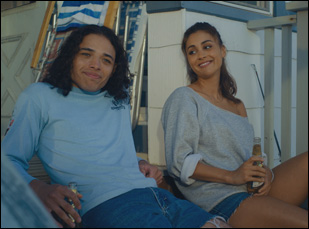
You probably know from watching the other films, I always try to find those young actors that are on the cusp and part of it is I make low budgeted independent films, so I can’t afford the actors who have already made it, so we find the ones who are knocking on the door — the actor who everybody thinks is going to be a star, but they haven’t quite gotten their break yet, going all the way back to “She’s the One” with Cameron [Diaz] and Amanda Peet and Leslie Mann. Those are the folks my casting director Mary Beth Fox and I try to find, so when it does happen and they have these great careers, it’s obviously very satisfying in that you know that you’re in part helping them achieve their goals. You gave them that early job that hopefully some other filmmaker saw and said, “Hey, let’s give Rosario Dawson a shot.” And this ensemble is no different than that. Not only are they all wonderfully talented, but he best thing about working with them are their enthusiasm for being on set and doing work. They were showing up on days that they weren’t working, just to hang out and be a part of the process and when you can put together a team like that, that’s a lot of fun.
“Summer Days, Summer Nights” is now on demand and on iTunes, Google Play and Vudu.




